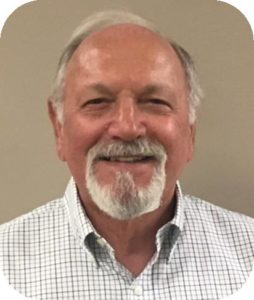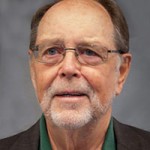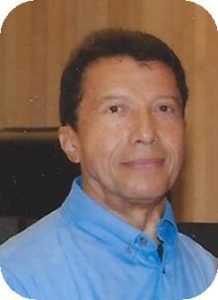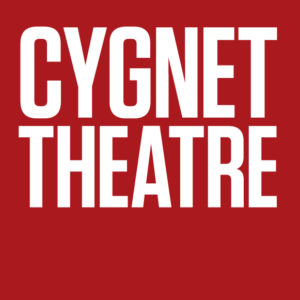February 2018
Honoring Yesterday – Protecting Tomorrow
Vol. 49, No. 2
What’s Inside
- President’s Message
- General Membership Meeting
- Whence Came Pensions
- 2018 Scholarships
- SDCERA COLA 2018
- Cybersecurity Seminar
- RESDC Evening at the Theatre
- Save the Date – Meet & Greet
- RESDC Online Services
- Recent Events
- Pension Facts at a Glance
- See’s Candy Certificates Price Increase
- RESDC Membership Drive & Welcome New Members
February Calendar of Events
Thurs., Feb 8, 9:30am
RESDC Board of Directors Meeting
8825 Aero Drive, Suite 205
Thurs., Feb 15, 9:00am
SDCERA Board of Retirement Meeting
2275 Rio Bonito Way, Suite 200
Mon., Feb 19
President’s Day
RESDC & SDCERA offices closed
Weds., Feb 28
9:30am light refreshments | 10:00am presentation
RESDC North County General Membership Meeting
North Inland Live Well Center, Rooms C & D
649 West Mission Ave, Escondido, CA 92025
![]() View the NETWORK
View the NETWORK
as a printable PDF
Are you on social media?
Stay connected with us!
![]()
![]()
![]()
Quote of the Month
Your present circumstances don’t determine where you can go; they merely determine where you start.
– Nido Qubein
President’s Message

By John J. McTighe
For several years RESDC has been working with other retiree associations to provide positive stories about defined benefit plans. This has been a challenge because the popular media seems to have mistakenly determined that defined benefit plans are antiquated and are responsible for the financial problems besetting state and local governments. The Presidents of the City of San Diego Retired Employees Association, Retired Fire and Police Association, and I have recently completed and submitted for publication by The San Diego Union-Tribune a commentary that speaks to the financial health of the City and County of San Diego’s pension systems. Though both systems are independently governed and managed, they both face similar challenges in keeping their long-term investments on track to meet the obligations to retirees. The following commentary gives a closer look at what has been happening at these systems and is intended to raise public awareness of the strength of these systems.
In their January 12th edition, The San Diego Union-Tribune published the following commentary co-authored by RESDC President John McTighe, City of San Diego Retired Employees Association President Jim Baross and City of San Diego Retired Fire and Police Association President David A. Hall. A link to the article is found here:
http://www.sandiegouniontribune.com/opinion/commentary/sd-utbg-pensions-investment-returns-20180111-story.html
SAN DIEGO CITY AND COUNTY PENSION FUNDS ON TRACK
Invest for the long-haul. That’s the standard recommendation you’ll get from just about every prudent investment advisor. Don’t try to beat the market. Slow and steady wins the race. For some reason though, when some in the media report on pensions, the headlines often scream about short-term returns.
Local media, including the UT, have been quick to report when the City of San Diego and County of San Diego pension systems’ annual investment returns “miss” their targets. In fact, nearly every retirement fund experiences below-average returns in some years, as do most investment funds, but these are short-term returns.
We won’t see negative articles like those in the coming year, because at the end of their most recent annual accounting periods both the County and City systems’ annual returns significantly exceeded those same targets. But these too are short-term returns. The intent is not to meet or beat long-term investment return targets each year. That would be impossible. Meanwhile, the focus on short-term returns often obscures just how healthy both systems really are.
Pension systems are funded by three sources: Employees, employers, and returns on investment. The goals for those returns on investment are properly focused on the 25+ year range, because employees contributing to these plans will not typically receive benefits until after a lengthy career is over. Prudent, long-term investing, that meets achievable targets, ensures adequate funding of pensions.
Along with most retirement funds across the nation, the County and City pension systems have been gradually reducing their long-term investment return targets in accordance with predictions from actuaries that future investment returns may not be as robust as past returns. Whether these forecasts of lower market performance, along with the higher associated current and future costs they bring, prove to be accurate remains to be seen. What is certain is that lowering the investment return targets has further solidified these two already strong pension systems.
Take the San Diego County retirement system as an example. The long-term target investment return for this system is 7.25%. In the most recent year, its actual return on investment was 12% — well above the long-term target. But just as retirement systems should not be shortsightedly criticized for underperforming relative to the long-term target in any given year, they should not be lauded for exceeding the target in a particular year either. The key benchmark is that the County’s investment returns have been 8.3% over 25 years — more than a percentage point above the target.
Now let’s turn to the City of San Diego’s retirement system. This system has even more aggressively reduced its long-term target investment return target to 6.75%, and plans to reduce it even further to 6.5% in 2018. That’s very conservative, but San Diego’s system has greatly exceeded it. In the most recent year the return was 13.5%, but again, that’s just one year. The key benchmark is that its return on investment has been 8.4% over 25 years — almost two percentage points above the target.
In summary, annual investment returns of pension systems are relatively meaningless. While they are sometimes the basis of dramatic headlines, they are simply a snapshot in time. The key information is found in long-term investment returns and how closely they hue to the targets upon which funding of the systems are based. Both the County and City pensions are comfortably exceeding those targets over the long-term.
And yes, this year, the County system exceeded its long-term target by about 65% and the City system exceeded its long-term target by 100%, but now you know not to focus on that. Pensions invest for the long-haul. ◾
RESDC North County General Membership Meeting
 When
When
Wednesday, February 28, 2018
Beverages and light refreshments will be available at 9:30 a.m. Speakers will begin at 10:00 a.m.
Where
North Inland Live Well Center – Rooms C & D
649 West Mission Avenue, Escondido, CA 92025
Program
 Learn about the programs and services offered through ElderHelp, a local nonprofit organization that supports seniors and their independence. Transportation, home safety, care coordination, shared housing, and more will be covered. In addition, we will discuss the many ways to get involved in your community and the benefits of staying active through volunteerism.
Learn about the programs and services offered through ElderHelp, a local nonprofit organization that supports seniors and their independence. Transportation, home safety, care coordination, shared housing, and more will be covered. In addition, we will discuss the many ways to get involved in your community and the benefits of staying active through volunteerism.
Directions
- Take I-15 North.
- Use exit 32 to merge onto CA-78 East, and then exit onto Centre City Pkwy S.
- Take an immediate right onto W Mission Ave.
- Turn left at Alvarado Way into the parking lot.
RSVP
This is a FREE event. RSVP is requested but not required: online by clicking here and following the steps, or by calling (619) 688-9229.
Whence Came Pensions?
By Stan Coombs, Director
 Pensions weren’t around for our Stone Age forbearers, presumably, but they were a footnote in the Roman Empire if attorney and history buff Khalid Elhassan is to be believed. He reports that about 27 BC, Augustus established a permanent fund for discharged Legionaries, with the aim of redirecting their loyalty from previous commanders back to the Roman state. Modern civil servants should have as pragmatic a strategy (!)
Pensions weren’t around for our Stone Age forbearers, presumably, but they were a footnote in the Roman Empire if attorney and history buff Khalid Elhassan is to be believed. He reports that about 27 BC, Augustus established a permanent fund for discharged Legionaries, with the aim of redirecting their loyalty from previous commanders back to the Roman state. Modern civil servants should have as pragmatic a strategy (!)
Melissa Phipps, personal finance journalist, notes that lifetime benefits were also offered U.S. soldiers who survived the American Revolution and Civil War (and every war since). Life expectancy at birth, at the time, was about 49 years, and those reaching 60 could expect another 12 years. Three-quarters of all males over 65 years still worked.
Georgetown Law Center’s “A Timeline of the Evolution of Retirement in the United States,” attributes the first private pension plan in the Country to the American Express Company, in 1875. By 1899 there were 13 private pension plans. Banking, railroads and public utilities came on board early, and Standard Oil, US Steel, AT&T, Eastman Kodak, Goodyear and General Electric followed.
In 1913, Congress enacted the federal income tax, and made pension costs deductible, and attractive to businesses, the next year. By 1919 there were more than 300 private pension plans, motivated by the need to attract workers, reduce turnover, and “more humanly remove older, less productive employees.”
In the 1920’s, Congress enacted additional tax benefits, and in 1935 established the normal retirement age at 65 years in the Social Security Act. Life expectance at birth had increased to 60 years, and those reaching 65 could still expect another 12 years.
By 1940, 4.1 million, or 15% of U.S. private sector workers had pension plans. War-related tax increases kept deductible costs attractive to businesses.
By 1950, 9.8 million private sector workers, or 25%, were covered by pension plans. By 1980, 35.9 million, or 46%, were covered.
Those early plans usually promised indeterminate benefits for a minimal number of years between retirement and death. In 1956, the IRS defined pension plans, as those “established and maintained by an employer primarily to provide systematically for the payment of definitely determinable benefits to his employees over a number of years, usually for life, after retirement.” Today, we’d call that a defined benefit plan.
In 1978, Congress approved deferred compensation arrangements, now familiar as 401(k)s, allowing individuals to contribute, pre-tax, to self-directed investment funds, incentivizing workers to enhance their retirement strategies. Individually achieving adequate lifetime retirement funding with 401(k)s depended on disciplined contributing and successful investing, without guarantee of success. Today, we’d call that a defined contribution plan.
By 1979, 28% of U.S. private sector workers had defined benefit pension plans, and 7% had defined contribution plans, according to the Employee Benefit Research Institute. And, by 1987 there were more than 232,000 private defined benefit plans, with assets of $900 billion, covering 40 million workers, according to Bureau of Labor Statistics.
In 2006, life expectancy was 74 years for men and 79 years for women. Men at 65 expected to live to 81 years, women at 65 expected to live to 84.
But, plans were afoot in the business community to transfer pension responsibility and risk, from employers to employees, and by 2014 only 2% of private employees participated in defined benefit plans, and 33% in defined contribution arrangements.
So much for the private sector. Public sector pensions evolved from the Roman Legionaries and early American veteran’s survival benefits. New York City established the first plan for police in 1857, and some municipal employees in other big cities – fire fighters, police and teachers – were added.
By 1916, 159 cities had plans, and by the next year 85% of cities with 100,000 residents provided a police pension, according to Lee Craig, of North Carolina State University.
By 1928, the “Monthly Labor Review” characterized police and fire plans as “practically universal.” All cities in excess of 400,000 residents had police or fire pensions, or both. Sixty-six percent of cities with populations between 50,000 and 100,000 had pension plans, and 50% of small cities, with populations between 30,000 and 50,000, had them. Again, some cities covered other employees, as well.
The states were slower. Massachusetts set up the first state public sector plan in 1911. Workers paid up to 5% of wages into a trust fund, and were eligible to retire at 60. At retirement, Massachusetts would buy an annuity, equal to twice the value of the employee’s contributions plus interest. The standard defined benefit model soon replaced that arrangement.
By the late 1920’s 21 states had retirement plans for teachers, and six states covered other employees. All 50 states have pension plans today, some multiple plans.
But, public sector pension plans haven’t experienced the defined-benefit-to-defined-contribution surge that modified private sector retirement.
A 2016 Bureau of Labor Statistics study shows that, while private sector participation in defined benefit plans dropped from 76% of full-time employees in 1986, to 15% in 2016, public employee participation in defined benefit plans only dropped from 93% of full-time employees to 76% over the same period.
That said, in 2014, The Center for State and Local Government Excellence estimated that, while 11% of U.S. public employees were (then) “covered by something other than a traditional defined benefit plan,” public defined contribution plans will rise to 19% by 2042, judging from the rate of change to that point. ◾
2018 Scholarships
By Carlos Gonzalez, Scholarship Committee Chair

 RESDC will again offer five $2,000 scholarships to graduating high school seniors who are immediate family members of a retired RESDC member; pursuant to our existing Bylaws document. An immediate family member is defined as a child, grandchild, step child, or step grandchild.
RESDC will again offer five $2,000 scholarships to graduating high school seniors who are immediate family members of a retired RESDC member; pursuant to our existing Bylaws document. An immediate family member is defined as a child, grandchild, step child, or step grandchild.
Applications are available to download and print from the RESDC website at: www.resdc.net/scholarship-program. Applications are also available to pick up at our office at 8825 Aero Dr., Suite 205, San Diego, CA 92123. For questions, call the RESDC office toll free at (866) 688-9229 or email resdc@resdc.net.
The deadline this year is Friday, March 2, 2018. We are unable to accept applications postmarked after that date. Applicants will be notified of the results by the end of June, 2018.
We suggest you start this process early and coordinate your references. In the past, we have had to disqualify applications for lack of references.
As a reminder, RESDC promotes the Yakel Scholarship application. The application period closes on February 1, 2017 at 2:00 p.m. For more information about the Yakel Scholarship through the San Diego Foundation’s Common Scholarship Application program, visit: www.sdfoundation.org. Applicants will be notified about the Yakel Scholarship by June 1, 2017.
We strongly encourage all those who applied for the Yakel Scholarship to also apply for the RESDC Scholarship.
A document verifying that the sponsor is a retired RESDC member must be uploaded when applying for the Yakel Scholarship through the Common Scholarship Application. Please call the RESDC office to obtain this signed document. The foundation will not accept an application without RESDC’s validation.
The San Diego Foundation administers over 100 other scholarships for which students may qualify to apply. They also provide resources for students, parents, and mentors to help navigate the scholarship process. In 2017, The San Diego Foundation awarded $2.2 million in scholarships to more than 800 students, making The Foundation the largest private non-university scholarship provider in San Diego County. ◾
 Your SDCERA Cost of Living Adjustment (COLA) Explained
Your SDCERA Cost of Living Adjustment (COLA) Explained
The Cost-of-Living Adjustment (COLA) is a benefit available to retired SDCERA Members that helps to offset the effects of inflation. The COLA is based on the Bureau of Labor Statistics’ Consumer Price Index (CPI) for the San Diego area that measures the change in the cost of certain goods and services, and it is published each year in late February.
The maximum COLA varies by Tier. Retired Tier I and Tier A members are eligible for an annual COLA of up to 3%. Tier B and Tier C members are eligible for an annual COLA of up to 2%. The applicable COLA is paid beginning in April.
SDCERA’s Board of Retirement reviews CPI information during its March meeting and takes the necessary action to apply the COLA, if applicable that year, to retired Members’ accounts. For more information about the 2018 COLA, visit www.sdcera.org after the Board’s March 15 meeting. ◾
Cybersecurity Seminar – SDCCU
By Nellie Parks, RESDC Member
Recently I attended a seminar on Cybersecurity sponsored by the San Diego County Credit Union (SDCCU). My curiosity was piqued due to the Equifax data breach, and judging from the large number of attendees, many felt as I did.
Jim, the speaker, provided information based on the confessions of an identity thief. At the conclusion of the seminar I left promising myself to get my laptop a complete check over by a PC technician!
Jim stated that cybercrime is a growth industry. Odds are the hacker is in another country. I was surprised when he said 95% of hacking starts with your email, and that email lists are sold online. His advice – limit your email. Do not click on links or open attachments. Have a good anti-virus software. Never trust an email, especially if unsolicited. Email can be spoofed. Jim believes mobile phones and tablets are more secure for opening links and attachments than laptops or personal computers.
Malware is malicious software. It can take screenshots of computers and watch keystrokes; steal usernames and passwords; it can monitor online banking, turn on a webcam and see what a victim is doing without him or her knowing. If your credit company offers free credit monitoring, take it. Remember, nothing is 100% safe.
This is a brief summary of the presentation. I came away with the opinion that cybersecurity is a serious matter embedded in today’s society. We can be affected both financially and emotionally. The computer experts say be careful and responsible online; after watching several internet hackers’ documentaries on how easily privacy can be invaded, I have to agree.
These seminars are offered periodically by SDCCU, and probably by other financial institutions as well. I found the information eye-opening and very useful.
Well, gotta go. Time to do my online banking!
(RESDC welcomes contributions from members who wish to share experiences that may be of interest to others.)
RESDC Evening at the Theatre
A Little Night Music at Cygnet Theatre, Wednesday, March 21
 We invite you to join RESDC for an Evening at the Theatre on March 21st! We will be attending the musical A Little Night Music at Cygnet Theatre in Old Town. We have a limited number of tickets available at a group rate.
We invite you to join RESDC for an Evening at the Theatre on March 21st! We will be attending the musical A Little Night Music at Cygnet Theatre in Old Town. We have a limited number of tickets available at a group rate.
Founded in 2003, Cygnet Theatre is a leading regional company and one of San Diego’s cultural icons. Each year, Cygnet Theatre creates an eclectic mix of 6 or 7 mainstage productions, from classics to Broadway-style musicals.
A Little Night Music Show Overview: Desirée Armfeldt has always captured the hearts of men. When both of her lovers – and their wives – show up for a weekend in the country, a tangled web of love and desire lead to humorous and heartbreaking revelations. Sophisticated, literate and stylish, but also disarmingly warm, funny, charming and very human. Featuring the hit song “Send in the Clowns.”
Enhance your theatre experience! Join Associate Artistic Director Rob Lutfy on the Elaine Lipinsky patio at 6:30pm for a complimentary casual chat to learn more about the show.
 When
When
Wednesday, March 21, 2018
Pre-show chat begins at 6:30pm on the patio. Show begins promptly at 7:30pm. We recommend arriving 30-45 minutes early to locate parking and pick up your tickets from Will Call.
Where
Cygnet Theatre
4040 Twiggs Street, San Diego, CA 92110
Tickets
A limited number of $30 tickets (regularly $51) are available for purchase through RESDC. Tickets can be purchased: online by clicking here and following the steps, by calling the RESDC Office at (619) 688-9229 during our hours of Mon-Fri 9am – 2pm, or by mailing the Registration Form and a check payable to RESDC to 8825 Aero Dr. Suite 205, San Diego, CA 92123.
Please inform us of any special requirements, e.g. wheelchair or difficulty with stairs. Tickets will not be mailed. Tickets will be available for pick up from the Will Call window at the Cygnet Theatre Box Office starting approximately two hours prior to show time.
Directions & Parking
From I-8: Take I-8 west and exit at Taylor Street. Cross over the freeway and make a right onto Taylor Street. At the third traffic light, make a left onto Juan Street. Make a right at the second stop sign onto Twiggs Street. The theatre is the first building on the right.
From I-5: Take I-5 to the Old Town Avenue Exit. Head east on Old Town Avenue (left from I-5 South, right from I-5 North). Make a left on San Diego Avenue. Follow San Diego Avenue until it ends at Twiggs Street. Make a right. The theatre is the second building on the left.
Parking:
There are several free parking lots in Old Town, all within walking distance of the theatre. Street parking is free, but please be aware that there are often time limits, especially along San Diego Avenue.
There is a small free lot located next to the theatre, however, it fills up fast. A courtesy parking attendant is stationed at this lot beginning two hours prior to the performance. The attendant can assist you with directions to alternative parking options.
For no-hassle parking, we recommend parking in the Caltrans lot just a few blocks away. Located on Taylor Street, at the end of Juan Street, this lot is free weekday evenings after 5pm and all day on weekends.
 Save the Date
Save the Date
Tuesday, March 13th
Meet and Greet with RESDC Leadership
RESDC members and any other interested parties are cordially invited to join RESDC President John McTighe and Executive Director Mark Nanzer for an informal gathering.
This is your opportunity to interact with our leadership, learn more about the organization, and to ask any questions you may have. We hope to see you there!
Date: Tuesday, March 13, 2018
Time 9:30 a.m.
Location: RESDC Office
8825 Aero Drive, Suite 200
San Diego, CA 92123 ◾
San Diego County Credit Union

In a big bank trap? Eligible SDCCU® cardholders can transfer their high-rate credit cards to a low-rate SDCCU Visa®! Transferring is easier than ever with the new SDCCU Easy Balance Transfer mobile app. Simply take a picture of the credit card payment stub you want to transfer and the app will collect the required information. It’s as easy as Balance. Snap. Transfer.SM The app is available from either iTunes® or Google Play®, search for SDCCU. ◾
RESDC Online Services
Great Resources Available – Check it Out!
Member Self-Service
As part of our ongoing effort to better serve our members, this past year RESDC launched a member self-service portion of our website. You can login online to:
- Opt-in to the Member Directory, which is visible only to logged-in members of RESDC. You choose what information to share.
- Register for events and pay online with a credit card.
- View and update your account information such as your email and phone number.
The member self-service area can be accessed by going to www.resdc.net and clicking on the menu item for “Member Login.” Please note that you must have an email on file with us in order to log-in. If you don’t currently receive emails from RESDC and would like to like to join both our email list and the member website, send us your full name and email address by contacting us at resdc@resdc.net or by calling (619) 688-9229.
Main RESDC Website
On the main RESDC website, www.resdc.net, you can also:
- Read current and past editions of The NETWORK
- See an overview of all available member discounts and benefits
- View photos from our events
- Stay up-to-date on pension and retirement news through our News Now page, a curated list of recent articles in the media
Facebook and Twitter
And don’t forget to follow RESDC on Facebook and Twitter! We share news from around San Diego County, articles related to retirement and pensions, and notices about events.
Facebook: https://www.facebook.com/RetiredEmployeesofSanDiegoCounty/
Twitter: https://twitter.com/RESDC
Recent Events
Pension Facts at a Glance
18,247
Number of retired members of SDCERA as of June 30, 2017.
- SDCERA Releases the Popular Annual Financial Report (PAFR). The San Diego County Employees Retirement Association recently released the 2017 PAFR, which provides a summary of the information contained in SDCERA’s Comprehensive Annual Financial Review for the fiscal year. To access the report, visit: www.sdcera.org/finance.htm.
- County Developing Age Well San Diego Plan. RESDC, as a proud Live Well San Diego partner, is participating in workgroup planning sessions for a new initiative being implemented by the County of San Diego. The Age Well San Diego Plan will make our region a community that is livable for all ages. Current planning meetings address topic areas including: Health & Community Support; Housing; Social Participation; and Transportation. Stay tuned to The NETWORK for further details on the implementation of the plan. ◾
 See’s Candy Certificates
See’s Candy Certificates
Increase in Price for 2018
See’s Candy has increased the retail price of their candy commencing January 2017 to $20.50 per pound. Our office will offer See’s Candy Certificates to our members for the price of $17.50 for each one pound gift certificate. This is a $3.00 savings over the retail price.
Please send a check payable to RESDC for the number of certificates you want to purchase with a business-sized (#10) stamped self-addressed envelope to RESDC, 8825 Aero Dr., Suite 205, San Diego, CA 92123. For more than five certificates please affix .71 cents postage on the return envelope.
RESDC members are also entitled to a group discount at the See’s Discount Stores at 3751 Rosecrans Street in San Diego and 1830 Marron Road, Suite #124 in Carlsbad. You must show them your RESDC Membership Card for the discount. The group discount price for a one pound pre-packed box of chocolates is $16.30 if purchased in person at the San Diego and Carlsbad discount stores.
RESDC Annual Membership Drive
By Mark Nanzer, Executive Director
I’m excited to report on our most recent RESDC member recruitment campaign. The list below demonstrates the success of the effort and interest County retirees have of the value of RESDC membership. On behalf of our Board of Directors, I am pleased to welcome all our new members and we look forward to serving you in the new year and beyond!
In collaboration with SDCERA and Pacific Group Agencies, RESDC mailed out a membership packet with the 2018 Benefits Open Enrollment Kit to over 7,500 non-RESDC member retirees. I want to extend special thanks to our partners in this effort, SDCERA’s Communications Manager Jerry Fafaul, and Pacific Group Agencies’ Steve Pettee and Greg Margulies.
We sincerely appreciate your membership and encourage you to visit our website at www.resdc.net, where you will find information on upcoming events, keep up-to-date on what’s happening in the world of public pensions, and learn how to access great RESDC member benefits and community resources.
Thanks so much for your support and I hope to see you at our upcoming events including our February 28th General Membership Meeting in Escondido and our Meet and Greet on March 13th at the RESDC office.
Welcome New Members
Rolando Abella
Eliot Alazraki
Luz Algarin
Jeanette Alschbach
Jose Amular
Claudia Anzures
Melissa Arellano
Patrice Asmussen
Douglas Atencio
Judith Baker
Lerma Barbon
Mary Jean Barham
Ann Bartoe
Josephine Bautista
George Beitey
Annie Bell
Ida Bell
Isabel Belle
Emma Berdan
Chris Betschart
Marianne Bickhaus
Thomas Bickhaus
Rose Marie Bill
James Blackmon
Harry Bonnell
Lawrence Bookbinder
Earl Bookhammer
Elis Bradley
Phillipa Brown
Cathy Burger
Adrianna Burnett
Louise Burson
Madeline Bustria
Karen Butchko*
Phyllis Cartwright
Ruben Castaneda
Laurie Clarke
Judie Cochiolo
Donna Colon
Candis Compton
William Crane
Jeanette Crim
Christine Cunning
Claudia Davis
Wilhelmina DeGuzman
Romeo Delcarmen
Lucille Delgado
David Dicarlo
Elaine Dodson
William Doerrer
Jill Donahue
Gaylene Donegan
Constance Dorhan
George Downs
Mayda Downs
Loreeta Earl
Virginia Edwards
Joni Eisenstein
Richard Escamilla
Gloria Estrada
Fely Eugenio
Elizabeth Evelyn
Camille Ewing
Tautunu Faapouli
Michael Fabrizio
Cynthia Fera
Dianne Feureisen
Thomas Fitzgerald
Lupe Flores
Michelle Foy
Julie Freeman
Manuel Frias
Gerardo Galano*
Maria Gomez
Sandra Gonzalez
Tara Goodman
Theresa Gossett
Leonor Gracia
Sondra Graham
Patricia Guaderrama
Anthony Guerra
Stephanie Guerra
Amelia Gutierrez
Ricardo Gutierrez
Lynn Hamon
Virginia Harrell
Cliston Hensley
Randolph Hernandez
Carmen Hernandez
Rosanna Heywood
Kenny Ho
Patsy Holloman
Karen Hubbard
Paula Ingrum
Paul Insunza
Cynthia Jackson
Mack Jenkins
Barbara Johnson
Eric Kansaki
Debbie Kelly
Elyse Keon
Cynthia Kettler
Michael Klatt
John King
Susan Kower
Samuel Kuoha
Arlene Lafromboise
Dallas LaRue
Juan Leyva
Linda Limon
Ignacio Lizarraga
Federico Llevares
Joseph Long
Emma Lopez
Lanette Lynch
Sarah Lynch
Georgianna Mace
Sarah Mange
Timoteo Manzano
Andrea Marino
Gustavo Martin del Campo
Rachael Martinez
Keith McClanahan
Fredrick McCollum
Bernard McCoy
Peter McKimmin
Martha McRae
Wilfredo Mendoza
Maria Teresa Mercader
Michael Mercurio
Rowene Mesina
Clemencia Michel
Sharon Miller
Linda Mino
Kathleen Moore
Denisa Morgan
Jacquelin Moriel
Jo Morris
Jill Moulton
Perry Moyd
Patricia Murray
Devota Nead
Susan Newman
Hue Nguyen
Ester Oconnor
Samuel Oglesby
Anthony Oliveira
Rodelia Ona
Sharon O’Neal
Alfred Palmiere
Jesus Pamintuan
Melita Panganiban
Michael Paquette
Sally Penso
Maria Peraza
Richard Persky
Khampheng Phabmixay
Dagmara Pine
James Piscitelli
Linda Prasad
Shari Prasch Turnage
Cynthia Randazzo
Many Rapolk
Greg Reynolds
Joyce Rhett
Samuel Richards
Cordelia Ridenour
Phyllis Roberts
Randall Robinson
Sonia Rodriguez
Mark Rogers
Laura Romano
James Romo
Cynthia Ropp-Richter
Scott Rossall
Blanche Saad
Ignacio Santos
Sonia Santoyo
Stuart Schafer
John Semerau
Guadalupe Serrano
Carolyn Shen
Jean Shepard
Carol Sickafoose
Rosemarie Simpson
Robert Sirota
Alma Smith
Florante Soliman
Irmena Somera
Harlan Steiner
Mark Tally
Marinette Tan
Deborah Tate
Carol Taylor
Karen Taylor
Olean Taylor
Carolina Terrazas
Vanessa Thompson
Gerlind Thurber
George Trueman
Alma Uphoff
Alberto Valdez
Yolanda Valdez
Jane Villarreal
Elisa Viscarra
Fong Vu
George Ward
Shirley Williams-Fink
Victoria Williams-Fink
Sybil Wille
Judith Willis
Lee Wilson
Quarlan Witt
Summer Young
Sharon Zeiden
*Associate Member
The surviving spouse of a member is eligible for RESDC membership. For enrollment assistance, call (866) 688-9229. ◾
NETWORK is the official monthly newsletter of the Retired Employees of San Diego County, Inc. (RESDC), a private non-profit organization.
The information printed in the NETWORK is believed to be from reliable sources. However, no responsibility is assumed by the NETWORK for inaccuracies contained herein.
Business and Inquiries: Business matters and address changes may be recorded on our voicemail at any time, call (866) 688-9229. Please spell your name so the correct member record can be located.
Retired Employees of San Diego County, Inc.
8825 Aero Drive, Suite 205 | San Diego, CA 92123
Office Hours: 9 a.m. to 2 p.m. Monday through Friday
TELEPHONE: (866) 688-9229 Toll Free
FAX: (619) 688-0766
E-MAIL: resdc@resdc.net


